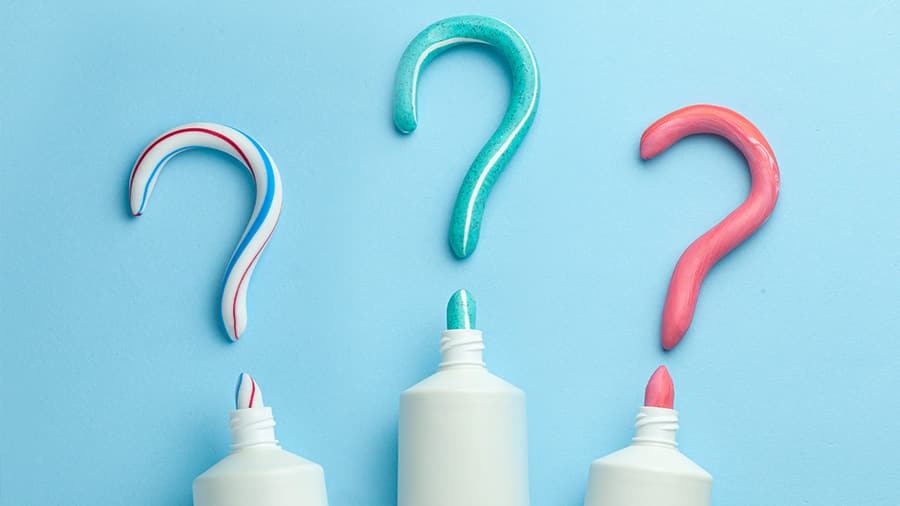Possible Reasons for White Spot Lesions on Teeth
As we mentioned above, many things cause white spot lesions on teeth. Here's a look at the top three:
- Fluorosis is caused if you ingest large quantities of fluoride. While there are many benefits to fluoride, too much can cause teeth discoloration that appears chalky white, yellow, or brown. This can come from swallowing toothpaste, drinking overly fluoridated water, and taking fluoride supplements.
- The IDA's National Oral Health Programme explains that changes in development of enamel (amelogenesis) can cause hypoplasia (pitting, furrowing or total absence of enamel) and hypocalcification (opaque or chalky areas on normal enamel surfaces). Nutritional deficiencies, endocrinopathies, febrile diseases and certain chemicals (excessive fluoride <1.5ppm antibiotics) may cause this. Systemic influences causing enamel hypoplasia frequently occur during the 1st year. Therefore, the permanent teeth most frequently affected are incisors, canines, and first molars. The upper lateral incisor, since it develops later, is often not affected.
- Demineralisation creates white areas of decalcification of the enamel on teeth, resulting from the accumulation of bacterial plaque. This is caused by poor oral hygiene and is seen in people who wear braces. The white spots are early cavities that can be reversed if treated quickly.
Treatments for White Spot Lesions
Here are several treatments to help eliminate white spot lesions. Talk to your dental professional about which one will provide the best results for you.
- Topical Fluoride Usage - Using a 5,000 ppm fluoride dentifrice may be prescribed by your dentist.
- The Indian Dental Association explains that deep internal dental stains are due to pulpal trauma, fluorosis, hypocalcification, tetracycline, hereditary opalescent dentin or mottled enamel, and it can be treated by microabrasion with dental bleaching. For greater effects, it can be combined with other whitening treatments.
- Bleaching-based whitening can balance the colour of your tooth enamel. Talk to your dentist about in-office whitening or dental-supervised take-home kits. Over the counter products, including toothpaste, gels, and strips, are available, but results may take longer. Talk to your dentist about what is best for you.
- Porcelain Veneers are custom made with thin layers of ceramic materials. Veneers are bonded to the front of your teeth. This a great option if your discoloration can’t be eliminated with bleaching alone. The result is natural-looking teeth that are stain-resistant.
Preventing White Spot Lesions
White spot lesions can occur in all ages and for many reasons. Here are some things to consider.
- Find out what the fluoride levels are in your tap water and discuss with your dentist
- Keep in mind that bottled water, formulas, drinks, and many foods contain fluoride
- If you are pregnant, talk to your obstetrician and dentist about fluoride and other medications that could affect your child’s developing teeth
- Assist children under the age of six in toothbrushing (use pea-sized amount of fluoride toothpaste)
- Brace wearers should brush and floss around wires and brackets regularly to reduce the risk of white marks
Fluorosis, enamel hypoplasia, demineralisation of the enamel on the teeth, a low calcium diet, and poor oral hygiene can all lead to white spot lesions. If you are noticing them on your teeth, consult your dental professional. There are treatments to reverse the problem. After all, the goal is to have your teeth all white, not just parts of them!
This article is intended to promote understanding of and knowledge about general oral health topics. It is not intended to be a substitute for professional advice, diagnosis or treatment. Always seek the advice of your dentist or other qualified healthcare provider with any questions you may have regarding a medical condition or treatment.
ORAL HEALTH QUIZ
What's behind your smile?
Take our Oral Health assessment to get the most from your oral care routine
ORAL HEALTH QUIZ
What's behind your smile?
Take our Oral Health assessment to get the most from your oral care routine













